Wheaton Drama’s current production, Twentieth Century, is set on a train. At every performance, we hear the audience gasp and applaud when the whole set lurches as the train leaves the station. So how did Doug Buethe and his crew build a moving set?
I talked to set designer Ben Aylesworth after the monthly meeting last tuesday, and got the scoop.
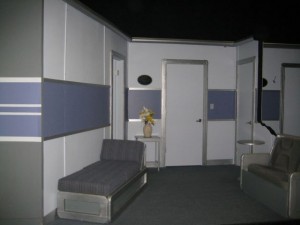
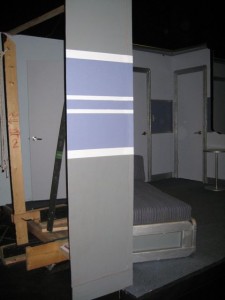
Although, as Ben explained to me, it’s not really magic. It’s one very large lever. “Simple, but eminently effective,” said Ben. The set is built on top of 4×8 platforms mounted on stringers, which is, I’m told, pretty normal. In this case, the stringers are on wheels. The lever is attached to both the set and the floor. The setup allows the entire set to be moved several inches in either direction.
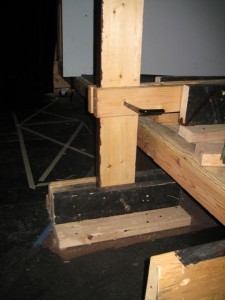
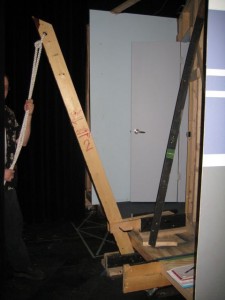
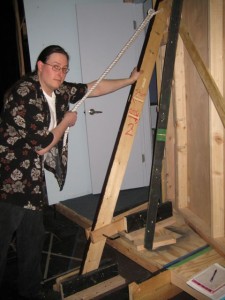
It’s one thing to move an empty set. During the show, the stage crew has to move the set with all of the actors on it. That takes more than one person, so there’s room on set platform for one crew member push (or pull) to assist the crew on the ground. “I’m just pretty impressed that it only takes three of us to move the whole thing. We’re super-strong!” said stage-crew member Amy Johnson.
Just making the set move is one thing. Convincing the audience that the train really is moving, or stopped at a station, requires another illusion. There’s a window with a curtain drawn across it on the wall of the “lounge” compartment on stage right. Through it, the audience sees the flashing of the station’s crossing guards when the train is stopped and the lights from the windows of another train passing the Twentieth Century Express. (I’ve seen it. It’s a lot like being on a train pulling into Union Station.) Ben took me behind the set, and showed me how they made it happen.
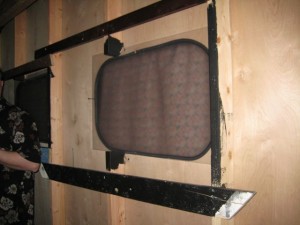
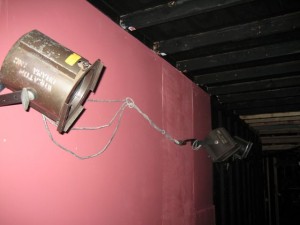

I’ll be completely honest here: I didn’t even know the word “fresnel” (pronounced fre-nel) existed. Fortunately, Ben not only knew the word, but was able to tell me how to spell it.
He explained that the three fresnels and two birdies are both set up in chase patterns, causing them to blink sequentially. The key to making the illusion work is that they are set up in different patterns. The larger lights are on a faster chase, creating the look of a train whizzing past. The smaller lights have that sightly lazy blink we’ve all watched through the windshield while waiting for a train to pass. It’s synchronized with the warning “Ding! Ding!” provided by the sound crew at every stop.
The entire set required enormous attention to detail, Ben said, and he’s incredibly appreciative of the work of Doug Buethe and set decorator Susan Carr. “I had the concept. They were the ones that actually made it work.”
The Twentieth Century Express will be on stage at Wheaton Drama for four more nights. After the show closes on Sunday, we have to tear down one really cool set to make way for the next production. So if you’re looking for something to do in the Wheaton area February 17th-20th, why not come see our train and support live theater in the Chicago suburbs? It’ll be a great ride!

